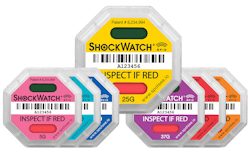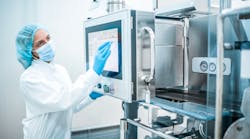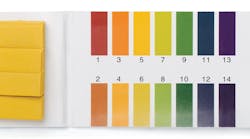The rise of single-use technologies (SUT) in pharma has shown no signs of abating and is continuing to transform every area of operations.
“The global single-use bioprocessing market was valued at $12.6 billion in 2019 and is projected to witness a CAGR of 12.8 percent by 2027,” says Mark A. Sitcoske, CEO of High Purity New England. “SUT continues to experience huge growth in 2020 in pre-commercial manufacturing, including preclinical and clinical scale systems for upstream processing, such as single-use media bags, bioprocess containers and mixers.”
In addition to preclinical applications, pharma is turning to one-and-done equipment to reduce manufacturing risk, time and costs, while boosting needed flexibility for the production of next-generation therapeutics. In response, vendors have continued to innovate SUT solutions that improve productivity throughout all areas of manufacturing — from sample testing to tracing products after they’ve been shipped out the door.
Sampling advanced therapies
With the rise of novel cell and gene therapies, the biopharma industry has turned to SUT to solve some of the challenges with small-batch manufacturing.
“Single-use products and systems are already proven as flexible, cost-effective alternatives to traditional bioprocessing methods when it comes to the production of monoclonal antibodies (mAbs),” says Timothy Korwan, director, New Product Introduction for single-use solutions, Avantor. “As a result, the ingenuity of single-use may also be adopted to improve cell and gene therapy production processes.”
According to Korwan, the frequent in-process sampling for cell and gene therapy production make SUT an attractive option for reducing the risk of contamination and preventing product loss. To that end, Avantor recently launched a single-use closed-system sampling solution: OmniTop Sample Tubes Adjustable Volume Sampling System.
Ideal for high-integrity product sampling applications such as mAbs, cell and gene therapy processes, and final fill operations, the system offers a unique dip tube with an integrated adjustment tool, which allows technicians to move the dip tube to the corresponding collection volume. Ultimately, the company says the system lowers contamination risk and reduces volume loss by enabling technicians to collect the exact amount of product needed to perform routine sampling or for a specific analytical process.
Mixing it up
Reducing contamination has also been a driver behind the transformation of mixing innovations to SUT.
“The industry has progressed toward using single-use bag technologies rather than traditional methods of stainless-steel tanks and grades A/B processing because of the positive characteristics they offer to end users … [such as] eliminating the risk of cross-contamination and reduced cleaning time,” Sitcoske says.
According to Sitcoske, High Purity New England (HPNE) developed its ClearMixx system to meet the growing demand for a more accurate single-use mixing solution.
“ClearMixx offers rapid and completely homogenous mixing for your process — without any impellers or moving components,” he says.
Designed to perform liquid/liquid and powder/liquid mixing, with a dispersion plate able to efficiently mix the most challenging buffer, media, and biopharmaceutical ingredients, ClearMixx is also able to keep API suspended during fill-finish.
Advanced materials
Leveraging advanced materials is another way that SUT can be enhanced to further limit contamination risks.
“One materials-based solution that can address particular bioprocessing challenges is the use of fluoropolymers, particularly a polymer such as polytetrafluoroethylene (PTFE),” says Keith Fritsky, product specialist at W.L. Gore PharmaBIO. “This substance has favorable chemical properties. It is bio and chemically inert, with a low coefficient of friction. It is chemically stable and non-particulating, with low extractables and high levels of purity.”
According to Gore, the single-use trays solve a time-consuming problem of product ejection and spillage often associated with the use of stainless steel. The new trays are ideal for bulk freeze-drying a variety of drug substances like polypeptides, oliogonucleotides and other APIs or HPAPIs.
Traceability
SUT can also be leveraged to overcome challenges related to track and trace, which continues to be a major focus for pharma.
“From serialization to product tagging, companies are continuously looking for ways to gain more insights into the supply chain,” says Angela Kerr, vice president, Product Portfolio, SpotSee.
SpotSee’s ShockWatch with radio-frequency identification (RFID) technology provides a single-use, tamper-proof device that combines traditional RFID inventory management with impact-damage monitoring to help deter, detect and diagnose issues throughout the supply chain. The company says that by gathering data throughout the supply chain, ShockWatch RFID helps users quickly identify where damage is occurring and isolate damaged inventory for further inspection.
“RFID technology has already helped companies reduce inventory management costs by seamlessly automating asset identification,” Kerr says.
All told, Fritsky says that SUT is continuing to help pharma usher in a new era of advancements.
“Bioprocessing is at a threshold — a threshold in which emerging technologies can help realize the vision of the industry to push beyond what is possible while also creating operational efficiencies that provide real benefits,” Fritsky says.
Top image: SpotSee's ShockWatch RFID improves visibility throughout the supply chain.




